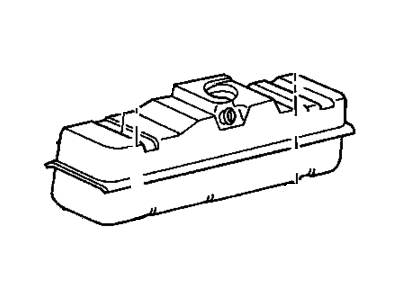
My Garage
My Account
Cart
Genuine Chevrolet K1500 Fuel Tank
Gas Tank- Select Vehicle by Model
- Select Vehicle by VIN
Select Vehicle by Model
orMake
Model
Year
Select Vehicle by VIN
For the most accurate results, select vehicle by your VIN (Vehicle Identification Number).
4 Fuel Tanks found
Chevrolet K1500 Tank Assembly, Fuel *Marked Print
Part Number: 15017939$452.34 MSRP: $682.25You Save: $229.91 (34%)Ships in 1-3 Business Days
Chevrolet K1500 Fuel Tank
The Fuel Tank of Chevrolet K1500's is a receptacle for fuel and it contains the electric fuel pump as well as the fuel gauge sender. It is also significantly involved in the Evaporative Emission Control System (EVAP) to help minimize fuel vapors' escape. Depending on their constructions these tanks may be metallic or plastic; however both metallic tanks are prone to corrosion and rusting while plastic tanks, though affect by temperature variation and vibrations, may crack. Cars used in racing are usually fitted with fuel cells which are normally designed to be strong enough to avoid busting and Splashing fuel in cases of a crash. Military grade, high capacity fuel tanks to increase range by 500 miles are also present; these fuel tanks are made from polymers which prevents corrosion unlike steel tanks. Some of the ways that can help to keep the fuel tank in proper order includes: washing, refilling always, and washing out the damaging fuel.
Each OEM Chevrolet K1500 Fuel Tank we offer is competitively priced and comes with the assurance of the manufacturer's warranty for the part. Furthermore, we guarantee the speedy delivery of your orders right to your doorstep. Our hassle-free return policy is also in place for your peace of mind.
Chevrolet K1500 Fuel Tank Parts Questions & Experts Answers
- Q: Why should cleaning and repair of the fuel tank be done by a trained professional on Chevrolet K1500?A:Cleaning and repair of the fuel tank should be done by a trained professional due to the potential danger involved. Even after cleaning, there may still be explosive fumes present. If the tank is removed, it should not be placed near sparks or open flames, especially in a garage with a natural gas appliance.







